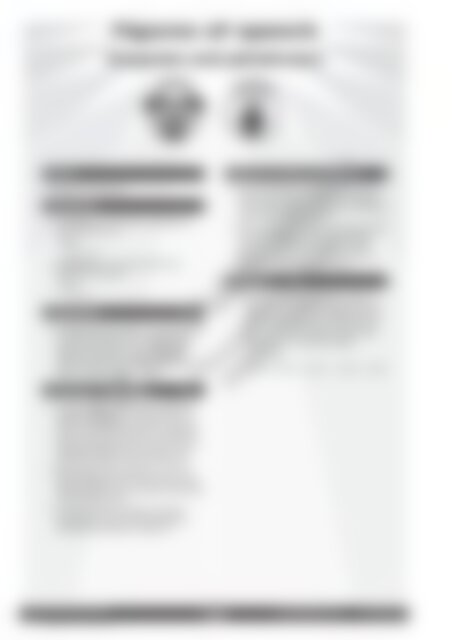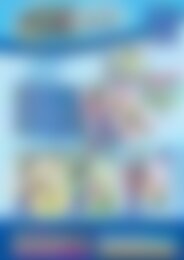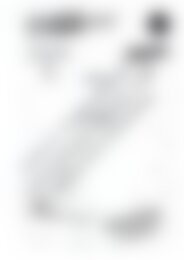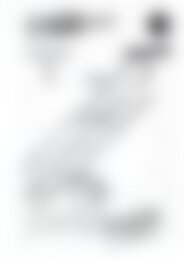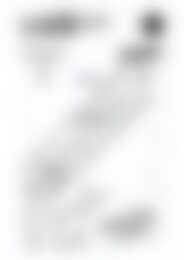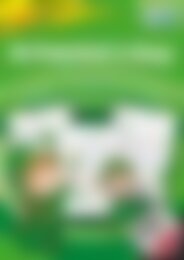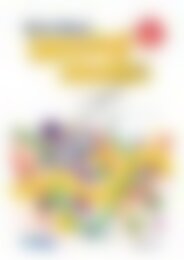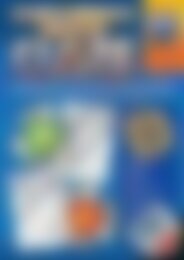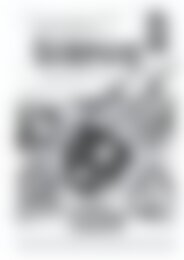RIC-6242 Primary Grammar and Word Study - Book C
Create successful ePaper yourself
Turn your PDF publications into a flip-book with our unique Google optimized e-Paper software.
Figures of speech<br />
Anagrams <strong>and</strong> palindromes<br />
Focus<br />
Anagrams <strong>and</strong> palindromes<br />
Definitions<br />
• An anagram is a word made by rearranging the<br />
letters of another word.<br />
Example:<br />
thorn – north<br />
• A palindrome is a word that reads the same<br />
forwards <strong>and</strong> backwards.<br />
Example:<br />
eye – eye<br />
Explanation<br />
• Investigating figures of speech such as anagrams<br />
<strong>and</strong> palindromes develops <strong>and</strong> enriches students<br />
vocabulary <strong>and</strong> fosters an interest in language.<br />
Working with anagrams, in particular, will help<br />
students’ spelling as they are required to rearrange<br />
letters to create new words.<br />
Worksheet information<br />
• To assist students in underst<strong>and</strong>ing how to create<br />
anagrams, make a copy of individual letters of a<br />
specific word on separate cards. Pick a word such<br />
as ‘tub’ or ‘spot’ <strong>and</strong> ask students to rearrange the<br />
letters on the cards to make a new word. They can<br />
try different combinations until successful. (‘Tub’<br />
makes ‘but’ <strong>and</strong> ‘spot’ makes ‘pots’ <strong>and</strong> ‘stop’.)<br />
• When students complete Questions 1 <strong>and</strong> 2, the<br />
cards could again be used or they could try writing<br />
different combinations on scrap paper. Context clues<br />
in the text will also assist.<br />
• The clues, the number of letters in each word<br />
<strong>and</strong> the letters in the box will assist students in<br />
identifying the palindromes in Question 3.<br />
Ideas for further practice<br />
• Create <strong>and</strong> distribute sets of word cards that have<br />
letters written on them that will make at least two<br />
words when the letters are rearranged. Students can<br />
work in pairs to create anagrams.<br />
• In pairs, students create their own palindromes with<br />
three letters. Students sort through the alphabet<br />
using the consonant/vowel/consonant method;<br />
e.g. bab, beb, bib, bob, bub—bib, bob <strong>and</strong> bub are<br />
palindromes. Dictionaries could be used.<br />
Answers<br />
1. Our family has two pets. Whiskers, the cat, is<br />
nearly ten years old. She still likes to chase mice<br />
<strong>and</strong> rats. Last week, she got a thorn in her paw.<br />
Whiskers was very brave when we pulled it out.<br />
Toby, our dog, is still a puppy. He loves to chew<br />
shoes <strong>and</strong> play tug of war with a rope.<br />
2. pets/step/pest<br />
3. (a) mum (b) bib (c) toot (d) pip (e) did<br />
©R.I.C. Publications<br />
Low Resolution Images<br />
Display Copy<br />
<strong>Primary</strong> grammar <strong>and</strong> word study 74<br />
www.ricpublications.com.au R.I.C. Publications ®<br />
ISBN 978-1-74126-766-2


